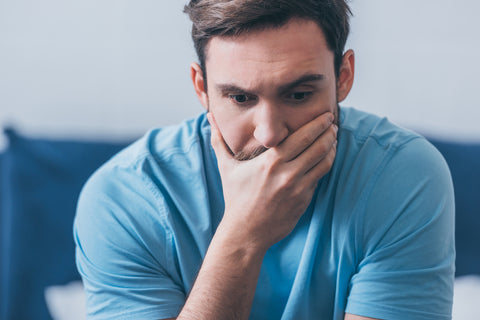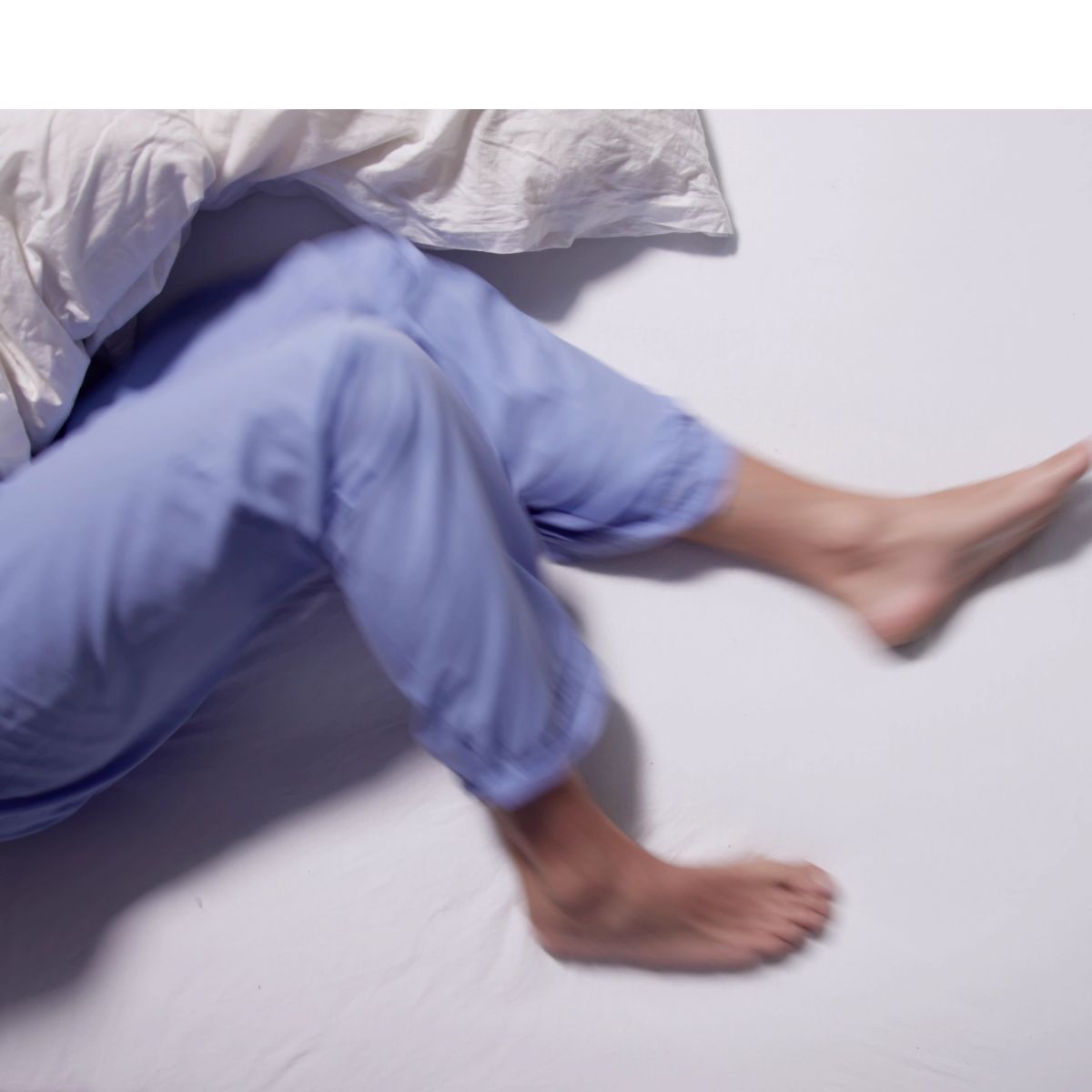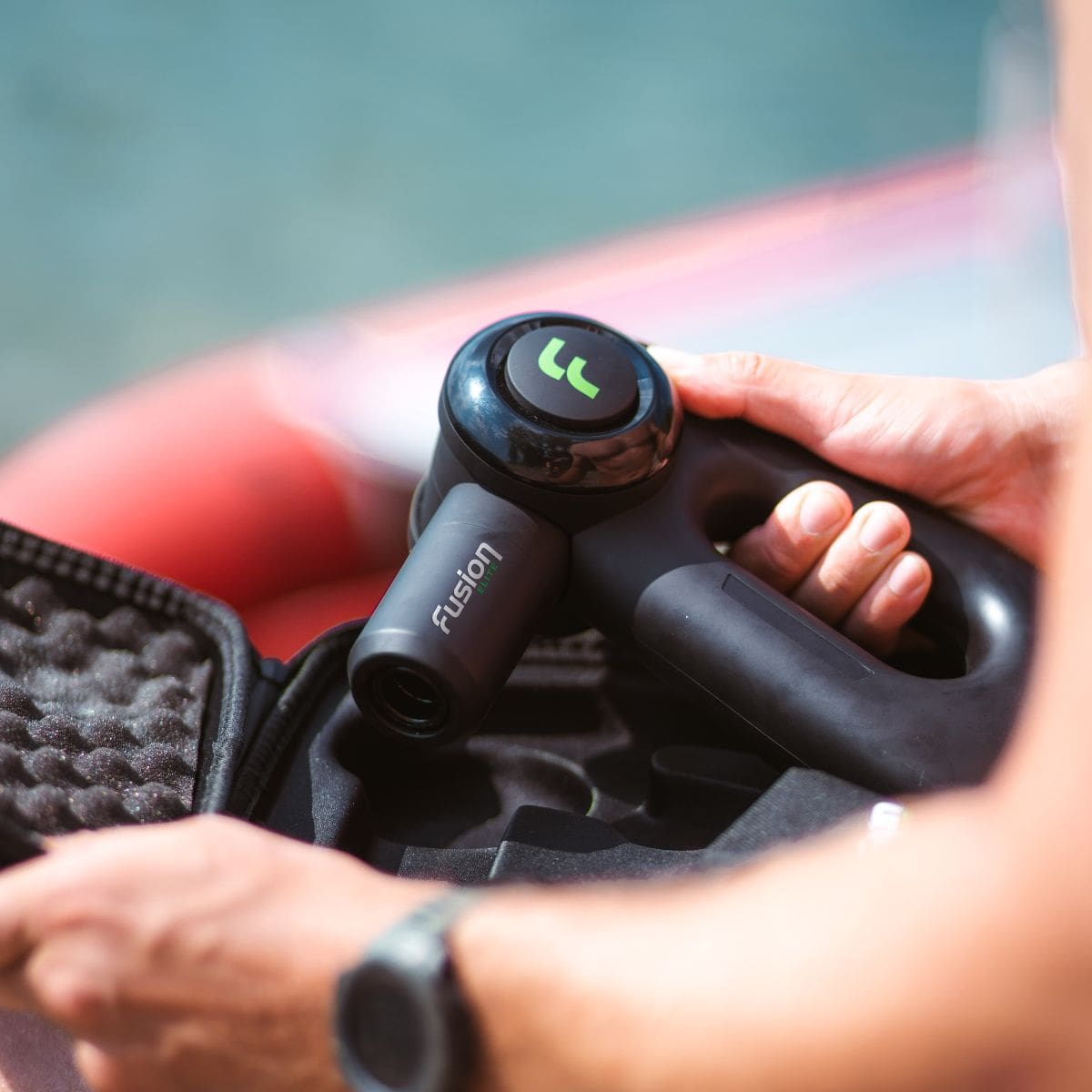Are you having a hard time sleeping at night and wondering how CPAP (Continuous Positive Airway Pressure) can help treat restless leg syndrome?
Or maybe you already have an idea of how CPAP can help with RLS but want to make sure you’re getting the most out of your therapy.
Well, you’ve come to the right place.
In this article, we’ll guide you as to how CPAP therapy can help with RLS and how to properly use your device.
Experiencing restless leg syndrome can be a painful and very frustrating experience.
Also known as Willis-Ekbom disease, this neurological disorder occurs as a result of an abnormal dopamine-opioid imbalance in the brain. This imbalance can cause a feeling of restlessness or an uncontrollable urge to move your legs.
This overwhelming urge often comes with an unpleasant sensation in the legs that can range from itching to tingling or even mild pain.
As any degree of insomnia symptoms from RLS can be very disruptive to anyone's sleep hygiene, people with this condition often find it difficult to get the rest they need. That's why finding treatments to help alleviate these sensations and allow a person to sleep through the night can be incredibly helpful.
But with a wide variety of treatments and therapies available, how can one tell which is best for their own needs?
Well, one method that has been found to be helpful in treating the depressive symptoms of RLS is CPAP therapy. So, what's CPAP all about, and just how exactly does it help people dealing with RLS?
Let's find out.
Understanding How CPAP Can Help with Restless Leg Syndrome
Known as Continuous Positive Airway Pressure therapy, CPAP is a widely used form of therapeutic machine for patients with sleep apnea - a disorder that causes one to stop breathing periodically when asleep.
When left unchecked, untreated sleep apnea can lead to serious medical conditions that include daytime fatigue, high blood pressure, and more. That's why finding relief from this condition is essential to maintaining overall good health and alleviating common sleep disorders.
CPAP helps apnea patients sleep better by helping them breathe more easily while preventing any episodes of pauses in breathing.
Here's how that happens:
You see, getting continuous positive airway pressure therapy all starts with a CPAP machine.
This device works by taking in room air, filtering it, and then delivering the filtered air at a constant pressure through an attached mask. When this pressurized air is inhaled, it prevents any blockage in your airways and helps keep them open during sleep.
But what most people don't realize is that besides treating obstructive sleep apnea syndrome, CPAP can also be an effective treatment option for anyone dealing with RLS.
That's because the same steady stream of air helps relax your muscles during sleep, which can help lessen any uncomfortable sensations you may feel from RLS.
What's more, filtered air inhaled from a CPAP machine helps boost your blood oxygen levels. And since oxygen plays an important role in regulating your dopamine-opioid balance, this can help reduce the insomnia-specific symptoms of RLS.
Now, can you imagine how much better your sleep quality can be if you have CPAP therapy to help with your RLS?
While the thought of wearing a mask over your face doesn't compare to convenient therapeutic tools like the Fusion Air C Pro, using a CPAP device offers you the same benefits at a lower cost. Let's explore some of these benefits in great detail.
How CPAP Benefits People with Restless Leg Syndrome
The benefits of using CPAP therapy for restless leg syndrome can be quite extensive, provided you use the machine correctly.
Some of them include:
It promotes better sleep
A primary benefit of using a CPAP machine is that it helps improve your sleep quality.
As you may well know, restless leg syndrome can be a major impediment to getting the rest you need at night. Severe symptoms like a burning sensation, twitching, and more can really put a damper on your sleep, leading to an incidence of insomnia.
But with CPAP therapy, the steady stream of air helps to relax your muscles and keep your airways open. This allows you to breathe better while also lessening any uncomfortable sensations you may feel from RLS.
What's more, oxygen is also known to help improve your brain's ability to produce melatonin - a hormone that helps regulate your sleep cycle.
Users tend to snore less
Another benefit that comes with using a CPAP machine is that you are likely to snore less.
While this may not seem like a big deal at first, the truth is that snoring can be quite disruptive to your sleep time. Not only does it affect your breathing patterns, but it can also make it harder for you to wake up during the night.
However, with CPAP therapy, this is no longer an issue - as the pressurized air helps to keep your airways open and prevent any blockage. This means that you are less likely to snore, which can significantly enhance your disturbed sleep quality.
Regulates blood sugar in diabetics
Are you living with diabetes?
If so, then you may be interested to know that using a CPAP machine could potentially help improve your sugar management.
Diabetics are highly susceptible to restless leg syndrome. But with a CPAP machine, you are less likely to experience any burning sensations in your legs or movements in sleep.
Studies have shown that these periodic limb movements can disrupt your sleep patterns, which can in turn affect your body's ability to regulate its blood sugar levels. But with CPAP therapy, you can reduce sleep disruption and potentially improve your sugar management.
Using a CPAP machine helps to improve your blood sugar levels and can even help reduce the risk of developing diabetes-related complications.
Reduces the chances of a heart attack or stroke
When it comes to alleviating restless leg syndrome, the benefits of CPAP therapy are even more far-reaching than just enhancing a better quality of life in patients.
A prospective sleep study has also found that using a CPAP machine can help reduce your risk of heart attack and stroke. This mainly occurs as a result of the improved air flow, which helps to regulate your blood pressure and reduce any inflammation in your arteries.
This is especially beneficial for those who have a history of heart disease, as CPAP therapy can help lower their risk of experiencing a serious cardiovascular event.
Whether you're dealing with restless leg syndrome or you're just looking for a more convenient way to sleep better, using a CPAP machine can be an effective solution.
Not only does it help provide you with the restful sleep you need, but it also offers numerous other benefits that can help improve your general well-being. Just make sure you're using it correctly - and you'll be well on your way to a better night's rest without sleep loss.
However, while the benefits of CPAP therapy may be numerous, there are also some drawbacks to consider. Let's explore a few of them in the next section.
Drawbacks of Using CPAP for Restless Leg Syndrome

From loud noises to physical discomfort and more, the drawbacks of using a CPAP machine to find relief from restless leg syndrome can be significant.
Let's take a look at a few of the most common ones:
Loud noises
One of the main drawbacks of using a CPAP machine is that it can be quite noisy.
This can be off-putting for patients who are already trying to find ways to get better sleep. The sound of the machine can be disruptive and make it difficult to sleep. Moreover, if you share your room with someone else, their sleep may also be disrupted by the noise.
That's why it's important to choose a CPAP machine that is as quiet as possible - and to make sure you wear earplugs if necessary.
Discomfort and difficulty falling asleep
For a number of people, making use of a CPAP machine can be uncomfortable - especially if it's not fitted correctly.
Moreover, the mere act of putting on a mask and adjusting to the pressure can lead to difficulty falling asleep. This is especially problematic for those who are already struggling with sleep loss due to restless leg syndrome.
It's important to note that these drawbacks are usually temporary and can be minimized by finding the right CPAP machine and accessories. Other treatments for sleep disorders can also be implemented for better results, thus helping to provide relief from daytime sleepiness.
Some may also wake up with a dry mouth
Ever woken up with a dry mouth just right after using a CPAP machine?
This is a common complaint among patients who use the device.
You see, when you wrap the mask around your face, the air from the machine can travel into your mouth and cause it to become dry. This isn’t a serious problem, but it can be uncomfortable and annoying. To combat this issue, you should consider investing in a chin strap or using a full-face mask instead of one that covers just your nose.
You can also make sure to drink plenty of fluids before bed and use a humidifier to add moisture to the air. This way, you can reduce the amount of dryness in your mouth.
Bloating and gas may occur
Bloating and gas may occur as a side effect of using a CPAP machine.
This is because the air pressure produced by the device can cause your stomach to expand, leading to bloating and discomfort. What's more, if you are using a nasal mask, this can be an independent risk factor for developing gas due to trapped air being forced up into your stomach.
To reduce these symptoms, make sure you’re not eating too close to bedtime. Also, try pushing your bedtime back so you have more time to digest your food before going to bed.
Nose bleeding
While nobody wants to experience nosebleeds, they may sometimes occur in some people who use CPAP machines.
How this happens remains unclear, but some experts theorize that the air pressure generated by the device can cause dryness and irritation in the nasal cavity. This can then result in nosebleeds as your body works to moisten the area.
If you happen to experience this side effect, try to stop using the machine for a few days. This will give your nasal cavity some time to recover, and the nosebleeds should eventually stop.
A feeling of claustrophobia or anxiety

Using a CPAP machine can trigger feelings of claustrophobia or anxiety in some patients.
The mask can feel tight and confining, and this can be overwhelming for some people. What's more, if you are already prone to anxiety, the loud noises of the device may trigger an attack.
If you experience any of these feelings, try to focus on calming techniques such as deep breathing and mindfulness. You can also try alternate treatments or masks that may be better suited to your needs.
These are just a few of the potential side effects of using a CPAP machine.
While most people find relief from restless leg syndrome and even obstructive sleep apnea using a CPAP machine, making use of a device can also lead to some uncomfortable, unpleasant side effects.
That's why following instructions is key to using a CPAP machine safely and effectively. If the thought of using one makes you uncomfortable, you may want to look into other alternatives for your condition.
Let's not forget about massage therapy.
With soothing massage tools like the Fusion Air C Pro, you can give yourself a massage in the comfort of your own home for fast relief from restless leg syndrome.
Frequently Asked Questions
Browse through our list of FAQs to find out more about whether a CPAP machine can help with restless leg syndrome.
Let us know if you have any further questions in the comments below.
Besides CPAP machine, what other alternative treatments can help treat restless leg syndrome?
While CPAP machines are the most popular treatment for restless leg syndrome, there are other alternatives available.
Massage therapy is a great way to reduce the symptoms of RLS. It has been proven to be just as effective at calming muscle tension and improving sleep quality as medications and other therapies.
Regular exercise can also help alleviate symptoms by releasing endorphins, which elevate the mood and reduce stress. Hot and cold compresses, dietary changes, and even yoga can also be effective treatments for people with RLS.
Whatever treatment you choose, just ensure that you consult with your doctor first.
Are there certain lifestyle changes that can help improve restless leg syndrome treatment when using a CPAP machine?
While using a CPAP machine, making lifestyle changes can help alleviate the primary and secondary symptoms of restless leg syndrome in patients.
This can include stretching your legs muscles, reducing alcohol intake, getting enough rest, and more. You can also boost your nutrient levels by taking magnesium or iron supplements or using dopaminergic agents.
High iron levels can lead to improvement in symptom alleviation, as iron deficiency in the body can be a contributing risk factor for sleep disturbances like RLS. Magnesium is also known to help with muscle relaxation and reduce sleep deprivation.
While magnesium or iron supplements can help alleviate RLS symptoms, it is always advised to consult your health care provider prior to taking any supplements. These activities can help reduce your symptoms and improve your overall sleep experience.
Are CPAP machines helpful for anyone with restless leg syndrome?
Sure, making use of CPAP machines can be helpful for anyone looking to find relief from restless legs syndrome.
However, while this therapy can provide some form of relief, people with certain underdiagnosed conditions may need to try something else.
Take a patient with high blood pressure or cardiovascular issues, for instance. The CPAP machine may not be the best option for those individuals, as it can increase their blood pressure and contribute to additional heart problems.
Patients with medical conditions like coronary artery disease or heart disease should avoid using CPAP machines as their first-line treatment for RLS. With this in mind, always consult with your healthcare provider prior to getting a CPAP machine if you have any pre-existing conditions.
Conclusion
Hope this article has helped you better understand how a CPAP machine can help you find relief from restless leg syndrome.
This effective therapy device helps to provide relief from restless leg syndrome and other periodic limb movement disorders by releasing continuous positive air pressure and keeping your airways open while you sleep. Proven benefits that come with using a CPAP machine can range from improved quality of sleep to improved energy levels and more.
However, while these machines are quite effective, there are some potential drawbacks to be aware of. For instance, some RLS and sleep apnea syndrome patients may find the loud noises produced by the machine disruptive to their sleep routine, while others may experience a feeling of claustrophobia or discomfort when wearing the mask.
Whether you choose to use a CPAP machine or any other form of treatment for your restless leg syndrome, always ensure to stick to the recommendations of your healthcare provider for the best results.
You can also reach out to us if you have any further questions or concerns about how CPAP machines or other therapeutic devices can help you find relief from restless leg syndrome.






